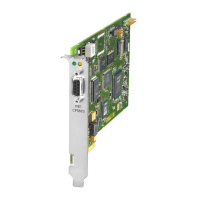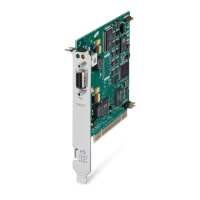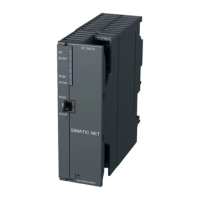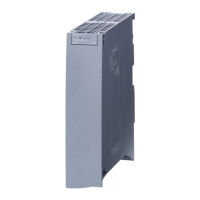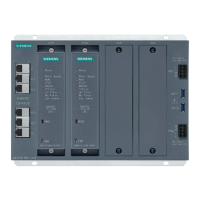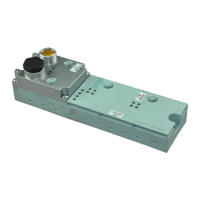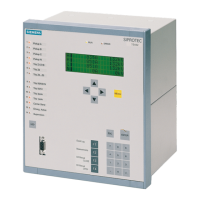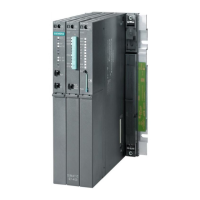Configuration
4.10 Data points
CP 1243-1
Operating Instructions, 04/2017, C79000-G8976-C365-03
91
Format (memory require-
ments)
Data point type CP
[Data point type TIM]
DNP3 object
group
[variations]
Floating-point number (32
bits)
Analog Input Event
[5, 7] in Real Q, M, DB
Analog Output Sta-
4)
[3] out Real Q, M, DB
Analog Output
[3] out Real Q, M, DB
Analog Output
4)
[5, 7] out Real Q, M, DB
Floating-point number (64
bits)
Analog Output
4)
[6, 8] out LReal Q, M, DB
Data block (1...64
bytes)
5)
Octet String / Oc-
[ - ] in, out
5)
DB
5)
5)
This object group can be configured in the Data point editor of STEP 7 using the substitute object group 12.
This object group can be configured in the Data point editor of STEP 7 using the substitute object group 20.
This object group can be configured in the Data point editor of STEP 7 using the substitute object group 22.
This object group can be configured in the Data point editor of STEP 7 using the substitute object group 41.
With these data point types, contiguous memory areas up to a size of 64 bytes can be transferred. All S7 data types with
a size between 1 and 64 bytes are compatible.
Substitute object groups (of the table footnotes
1)
,
2)
,
3)
,
4)
)
The initial data point types of the following object groups can be configured using the
substitute object groups listed above:
● 10 [2]
● 11 [1, 2]
● 21 [1, 2, 5, 6]
● 23 [1, 2, 5, 6]
● 40 [1, 2, 3]
● 42 [1, 2, 4, 5, 6, 7, 8]
To configure the DNP3 CP, use the specified substitute object group.
Assign each data point on the master using the configurable data point index in STEP 7. The
data point of the DNP3 CP is then assigned to the corresponding data point on the master.
Example of configuring the data point Binary Output (10 [2])
The data point is configured as follows:
On the DNP3 CP as Binary Command (12 [1])
On the master as Binary Output (10 [2])
With the data point types Binary Output Event (11) and Analog Output Event (42), you also
need to enable mirroring; refer to the next section.
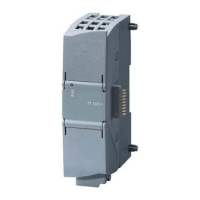
